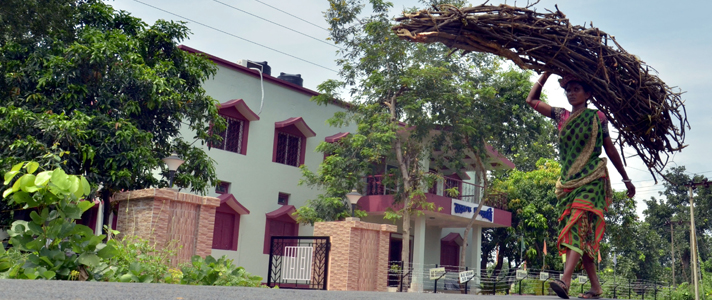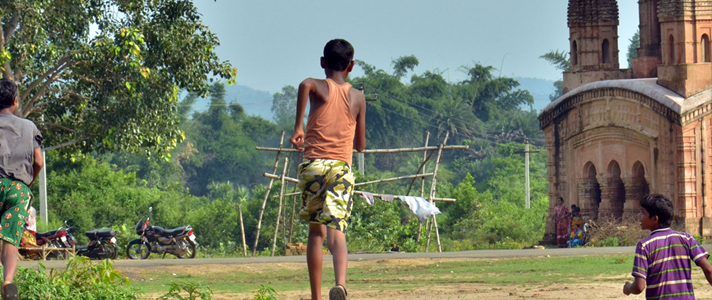Welcome To
Aranye Dinratri Gobag

ABOUT ARANYE DINRATRI GOBAG, GARH PANCHKOT, PURULIA
Garh Panchakot – Where History speaks out in ruins, rubble and mystic nature:
Sometimes you may get some rarest moments and opportunities in your life to talk to yourself in a very few places in the country where history surrounded by the bounty of nature takes you to the genesis of royal dynasties of South Bengal, their gradual rise and fall, certainly you find a reason to believe that you are there – where the environs are teaching you something worthy to be shared forever in its own style and design. Especially when you are lost to the remains of the ruined forts, temples of the medieval era those still stand unperturbed despite of the altering of time to an Android era furthermore the vicinity encased by the soothing greenery and translucent water bodies where the sleek tribal beauties wrap her secrets against an intruder’s stare swiftly – certainly you caught by the mystery of Garh Panchakot – a transit between the urban angst and the untapped tranquil of rusticity.
It’s located in the foothills of Panchkot in Purulia district of West Bengal.
A BRIEF HISTORY
Garh stands for Fort. As it talks about fort, certainly it bears the saga of power war and dominance of royal postures.
There are sufficient evidences that the robbers from Maharashtra described as Bargi’s had intruded into the Maan Bhoom dynasty during the 1760’s. The king was a Rajput chieftain who was devoted to Shaktism, the architecture and foundation of the scattered terracotta temples however reflect his inclination towards Vaishnavism as the period across this eastern sub-region was evidently influenced by the emergence of Shree Chaitanya – a proponent of Vaishnavism.
It was Alivardi Khan who was sworn in as the Nawab of Bengal in April 1740 after defeating Sarfiraj Khan. During the conflict, Sarfiraj’s brother-in-law had unleashed challenge to Alivardi Khan but considering his attempts going in vein, he had sought assistance by Raghoji Bhosle – the Maratha ruler of Nagpur. Bhosle assigned a cavalry to Bengal to confront Alivardi that entered through Panchet and as was evident, started looting indiscriminately the countryside. These Maratha soldiers were described as the Bargi’s. For almost 10 years they plundered Bengal which ended after a settlement between the Nawab of Bengal and the Maratha king. Meanwhile, during these encounters, the Bargi cavalry attacked Garh Panchakot and razed the king’s palace to the ground. It is believed that all the 17 wives of the king committed suicide by jumping amass into a well. The ravaged Garh Panchakot lied in the ruins ever since.
THE SCENIC BEAUTY OF GARH PANCHAKOT
The Panchet hills are dotted with tropical trees and appear lush green especially during the monsoon, each year. Down the hills quiet flows the Damodar river. Natural splendor of the woods coupled with the ever fresh breeze makes the place an undisputed weekend destination. You are free to walk along the traditional flora and fauna and the jumbo teak breeds like Sal, Palash, Sonajhuri, Tamal with breathing the aroma oozing out of their leaves and fascinating flowers.






